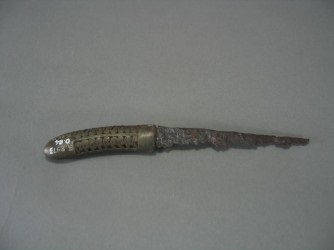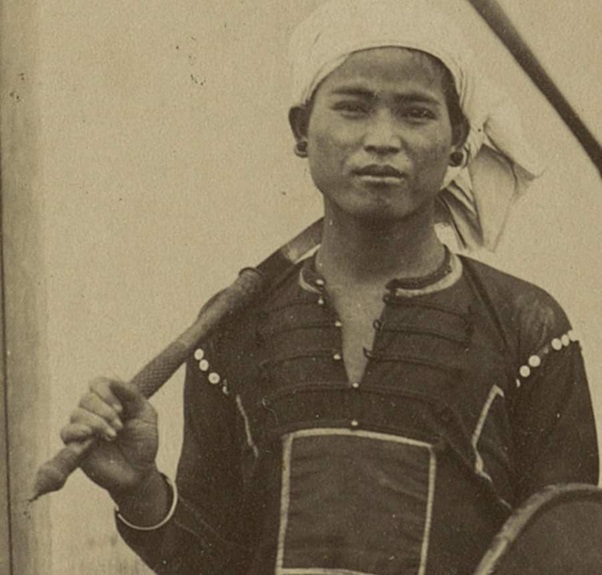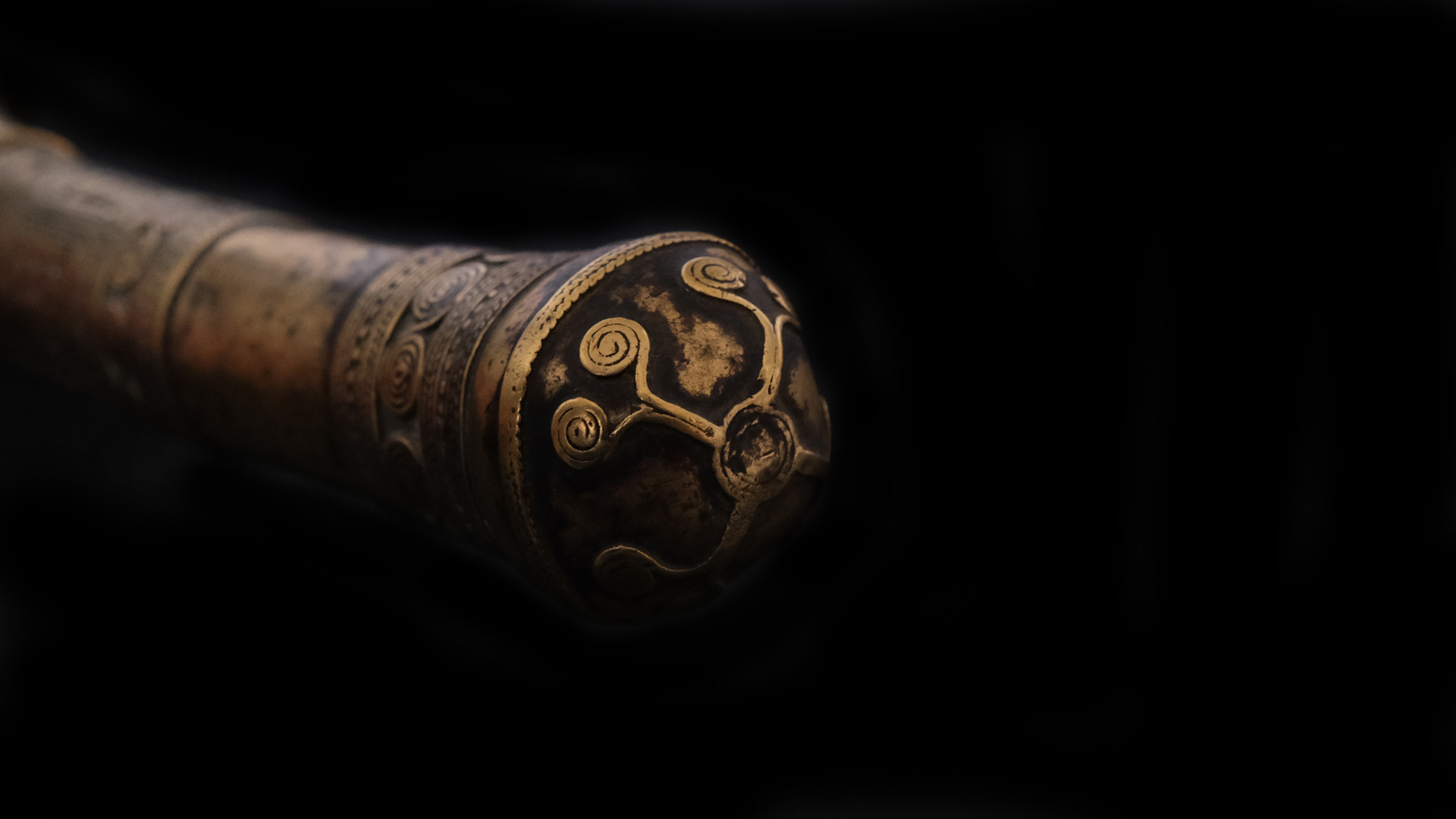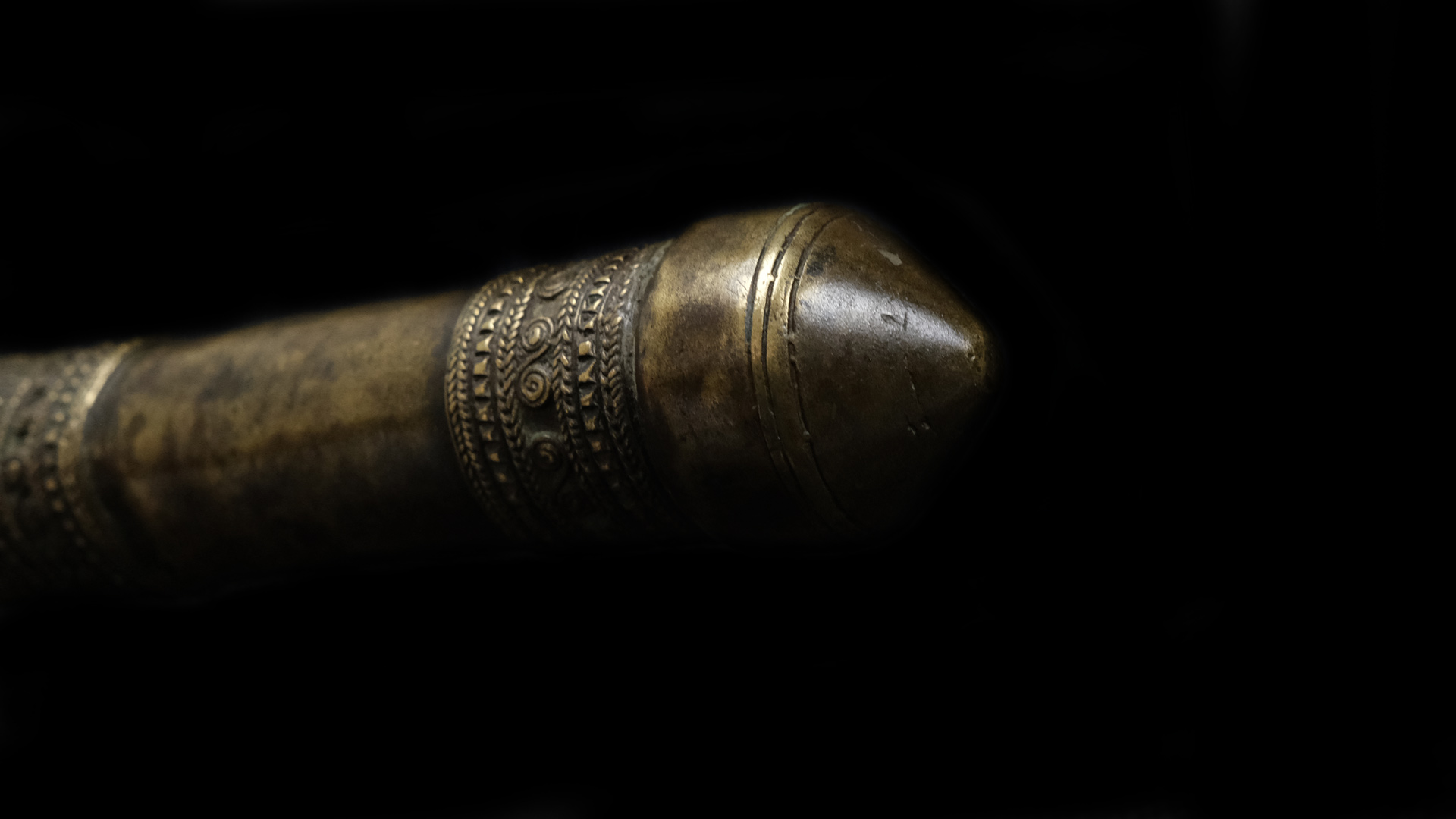.jpg)
Tracing Echoes of the Champa and Khmer
October 9, 2023 Asian Arms
The Champa kingdom and the Khmer kingdom of Cambodia were great regional rivals with a history of frequent and bloody conflict. However, they were also similar in many respects being both Hindu kingdoms drawing on a long tradition in southeast Asia of Indian influenced culture, in particular the kingdom or Mandala of Funan. This was manifested not only in religion but also in the use of Sanskrit and a shared iconographic style. These two competing powers engaged in trade and frequently intermarried between their royal families. Both suffered a steep decline in their power and influence, Champa being almost destroyed by the later 15th century by Da Viet, while the Khmer were brought low a few decades earlier by the rising Ayutthaya kingdom from modern day Thailand. Many Chams in fact fled to Cambodia and the close relationship between Chams and Khmers continued.
While the Khmer a visible and strong ethnic group to this day the Cham are much less so although temples and towers remain and are popular tourist attractions due to their striking architectural style. However, some of the hill tribes to be found in the highland regions of Vietnam, Cambodia and parts of Lao are in fact descendants of the Chams while other groups share a linguistic legacy with the Khmer.
Jarai, Koho, Raglai, Churu and Rhade peoples are surviving Cham language group speakers in the highlands of both Cambodia and Vietnam. Historically it is considered likely they were allied with and fought for Champa. These groups including the Cham, migrated from modern day Malaysia and Indonesia in the first millennium BC and by the 2nd century CE records exist for Cham political entities. According to Jarai traditions they fought to escape Cham control during the 14th century as Champa declined and at various times paid tribute to the Khmer and Vietnamese. They are both highly independent and isolated leading to the likelihood that their traditions have remained widely preserved across their history. This provides intriguing possibilities to analyze their weapons as likely preserving much earlier forms during the height of warfare between the Cham and Khmer kingdoms.
The same can be said for the Bahnar, a Mon-Khmer speaking group with a history of conflict with the Jarai but also aiding the Cham during their 15th century struggles with Dai Viet and with enough political clout to send ambassadors to the Khmer court in the 17th and 18th centuries. There exist a large number of other Mon-Khmer speaking groups in the region with similar practices of warfare and culture.
One of the most legendary references to a connection between the Khmer courts and the highlanders comes in the form of a legend regarding the ‘sadets’ or sorcerers of the Jarai, who were respected by both Khmer and Cham courts. This is perhaps best described by the legend retold in the famous work of Gerald C. Hickey, “The major Ethnic Groups of the South Vietnamese Highlands” regarding a particular sadet of fire (sadets being divided between fire, wind and water) who was made guardian of the sacred sword of the Cambodian kings, the ‘prah khan.’ This is apparently born out by a long standing tradition that the sadet of fire as well as the sadet of water pledged in 1601 to exchange gifts as part of an alliance with the king of Cambodia and continued this practice until 1890. The legend is in fact more complex and also plays on the relationship of the Jarai with the Chams, the sword in fact being found by a Cham king within a river, it was the Jarai who somehow came to possess it (perhaps a tie to the notion of the Cham speaking highland groups at times guarding Cham treasurers detailed further in this article). The legend goes on to state that the Khmer court came to possess the scabbard but the sword itself remained with the sadet of fire, who derived much of his powers through it. This included not only prowess on the battlefield but a range of other mystical abilities ascribed to possession of the artifact. These beliefs help to illustrate the powerful position of the Jarai but also the deeply held belief in their longstanding interaction and relationship with the two major lowland powers, the Khmer and Cham.
Simply put the highlands region between Vietnam and Cambodia, as well as parts of Laos, are home to highland peoples who are broadly split across a ethno-linguistic divide between Cham language and Mon-Khmer speakers with deep roots to the major kingdoms on either side of them.
In fact the weapons and dress of the Jarai and Bahnar mirror closely depictions of Khmer infantry found in Angkor depicting the Khmer-Cham wars. The shields used by the Bahnar and other hill peoples are identical in construction to those depicted at the Bayon temple complex, with two wooden rods across the back of the shield. This is a remarkable case of preservation in form which it can be expected survives in other elements of their weaponry.
.jpg)
.jpg)
Turning to swords, several collected among the Bahnar are held by the Quai Branly museum in France. These are of a type often associated by modern collectors with the Attapeu region, however as the same swords are found on the Vietnamese side of the border it is generally speaking, a type that seems to be found in the southern Laos region and northern Cambodia and is likely a very old form. There is a particular type with cast bronze or samrit handles that shares a design element with swords known from the Champasak region as well. This is a decorative element of overlapping lobes or leaves on the base of the guard.
.jpg)
In this example it is highly decorated showing a clear midrib of a leaf.
Other examples are more abstract.
.jpg)

This form and pattern is generally considered to be a lotus flower but perhaps this motif also is a nod to the forest products that were the lifeblood of these groups and their economy. The reasons for this perhaps being the case is deeply rooted in the economics and trade by the Champa in Eaglewood, also known as agarwood. This formed the backbone of their overseas trade, which was the lifeblood of Cham society, rather than agriculture. (Eaglewood and the Economic History of Champa and Central Vietnam by Andrew Hardy p.118) The ports of Champa were connected to a global trade network encompassing the Malay world, China, Japan, India and even the Mediterranean. Foreign traders including Indians, Malays and Chinese resided within these port towns. The ninth century writer and trader Sulayman, an Arab who mentions Champa, notes agarwood specifically, as well as noting that Champa states were essential stopping points for shipping to take on fresh water.
Given that Chinese trade and foreign relations works from the Song dynasty, specifically “Record of Foreign Nations” (Chu-fan-chi) by Chau Ju-Kau, also mention Cambodia specifically as a source, it is likely that it was also a key trade item in the Khmer economy.
The hill tribes depended on good acquired from Champa or Khmer sources such as salt, ceramics and metals. Equally the Champa and Khmer relied on these groups to procure and trade in forest products, the chief of which was eaglewood. Marco Polo mentions only eaglewood in his brief description of Champa and it was highly desired by Arab traders. Eaglewood is a fragrant wood but it most valuable when the tree is infected and as a result the wood contains a resin like substance. This is most often encountered in trees growing on steep slopes, thus the reason that eaglewood was found within the mountains and hills of the highlands. The value was reported in the 17th century to be equal to its weight in gold and Champa produced the finest quality of all. So important was the
trade that eaglewood features religious ceremonies and even stories of the principal goddess of the Cham pantheon, where the goddess of nature takes on the form of eaglewood itself. (A Journey of Ethnicity: In Search of the Cham of Vietnam By Rie Nakamura p.25)
The relationship between the Chams and the highland peoples was clearly interwoven and according to Cham legends this includes even a king, Po Rame, who was of highland origins and highlanders were guardians of the royal treasures. (Eaglewood and the Economic History of Champa and Central Vietnam by Andrew Hardy p.110) This includes mentions of the Churu and Koho serving as guards as well as the Raglai. The Cham economic connections also extended as far as Attapeu in modern day Laos where gold was obtained, encompassing the area and the swords under discussion. This relationship is evident even in later periods, during the Tay Son rebellion in Vietnam, support from the Cham and their associated highland connections formed an essential element of the Tay Son armies, swords of this form can be seen in Vietnamese museums along with other artifacts of the rebellion.
The shape of the eaglewood tree and its leaves can be seen in the following illustration.

A similar style of decoration can be observed on a Cham royal crown or headdress, although this is almost certainly the typical lotus motif, found across both Buddhist and Hindu influenced cultures in the region. This type of decoration is not unique to Cham items but part of a broad collection of Hindu and Buddhist influenced design motifs.

Other elements on some of these swords recall castings from centuries earlier as far back as Dong Son era bowls and bronzes. The example seen below has intricate swirls and patterns in the handle as well as a rather unique pommel made from a different copper alloy, perhaps part of a betel knife hilt originally. This is not a sword of the hill tribes, but rather a very old example with a blade with reflecting perhaps Japanese influence, including the use of a reinforcing collar or habaki.
.jpg)
The handle follows a pattern seen on other swords with this style of guard and handle but is shorter, with a ‘bud’ like pommel. This is an unusual feature and is seen rarely, another example is in the MET in NYC, although misattributed in their collections to an unrealistically early period.

.jpg)
The handle is comprised of several cast sections, with a smooth section that likely had organic wrapping, rattan or lacquered cord most likely, while the last section is a highly patterned tube recalling a style of bronze casting that has a very long history in the region, as far back as early bronze casting societies like the Dong Son.
.jpg)
A Dong Son armour plate from the Hanoi Weapons Museum (photo credit Gary Todd: WorldHistoryPics.com) shows similar design elements.

.jpg)
Again, a motif common also to Cham work, as seen in the decorated bronze container from the HCMC museum of Vietnamese History (photo credit: Gary Todd: WorldHistoryPics.com)

The pommel is quite worn but seems to follow a style of floral motif again common to both Khmer and Cham aesthetics likely representing a bamboo shoot.

The pommel is likely taken from a small betel nut knife and a similar example can be found in The National Cambodian Museum (collection number Ga.2973).

While these swords, as previously mentioned, are best known and associated with Southern Laos, given the history of the region and its connections via commerce to Champa and its proximity and history with Khmer rule it is difficult to imagine that this sword type does not owe a debt to these great kingdoms. Other examples seem to adopt features more common to Lan Xang and northern Thai swords including blades with pronounced V-ridge spines as seen on the following example. This is no doubt a sign of the shifting capabilities of peoples in these regions to acquire quality blades which were then mounted with these cast hilts. It is unknown, but not unlikely, that a blade could be acquired and then fitted to a handle made by an entirely different craftsman to suit the taste of the owner.
As the French collected examples of these within the ethnic groups of the Vietnamese highlands it is certain that this style was more widely distributed than just the Attapeu region. These are also not that common among hill tribe’s arsenals, with most carrying much simpler swords with long wooden shafts and far less elaborate fittings. Another telling example of the age of these swords is that when the were photographed by French travellers, they were invariably missing the organic grip wraps they were clearly designed to have on the non-decorated elements of the hilts. This speaks to the fact that by the time of colonisation these swords were already old and held as items of reverence within these tribes. This is perhaps understandable given the legend already recounted that clearly shows weapons with age and history could be held as talismans or at least objects attributed respect and spiritual powers and in particular weapons originating outside the culture itself.

It seems reasonable then to speculate that these examples may in fact be of great age and were either traded with the hill tribes or are in fact relics of a time when they assisted in the armies of various regional powers and the swords were kept as items of prestige. While bronze patina is possible to fake, these swords are not items collectable enough for a cottage industry of forced patina to be believable and many exhibit great age to both the handles and blades.
Perhaps more telling is the fact that these hilt styles are not part of the typical designs of Lan Xang or Lanna swords which dominate Laos and Northern Thailand. Rather they are a unique form, both blade and hilt, which indicates an ancient and well-preserved form. Both the blade proportions, casting style, decorative motifs and technique are not found within the broader range of Lan Xang sword types or Lanna swords. Given post 15th century influence of Siamese and to some degree, Lan Xang, across all of modern day Cambodia and south Vietnam, it is unreasonable to imagine that these forms do not owe something to a much older cultural heritage, which was then blended with the style of blade common to Lan Xang.
Oddities are found within the general type of these cast hilts, such as the following very old, and unfortunately slightly damaged example, with a unique pommel design, a guard of a four petal form common to Laos swords and paired an unusual straight blade. This is likely a very old sword that shows a transition from local blades to those manufactured by Tai peoples who were migrating into these areas over the centuries. That is not to imply this sword predates the Lao presence in these regions, but rather that a convergence of styles likely was carried out over a long period particularly in these remote areas.



Another shows that exact same style of mold was common for hilt component casting and their handles, but the guards and pommels could show tremendous variation. This one uses a solid samrit disc for a guard, which is then engraved.
.jpg)
.jpg)
While the pommel is a simple but unusual conical shape.

The decorative patterns, including the swirling circular motif can be clearly seen on other items from the region like a Cambodian knife in the National Museum collected in Vern Sai, a town very near the Laos border.

Cambodian National Museum inventory number Ga.2975
In the author’s opinion, traditions of casting and decoration almost invariably develop out of a shared cultural heritage rather than isolation and remote tribal groups are one of the only ways to gain an insight or window into the past, in much the same way that remote groups in the Himalayas still give a glimpse into the arms and armour of the ancient Tibetan plateau. These cast hilt swords, with the variety of motifs and styles seen are perhaps a similar window into older styles of weaponry in this general region where Cambodia, Laos and Vietnam meet. In further articles more examples will be explored in detail utilising references such as other cast metalwork that we can more easily attribute as touch points to better understand these swords. As there is no clear analogue to this casting style within other Lan Xang swords often identified with regional centers, it seems logical to look to former regional powers in this area, particularly Cambodia and older influences. Later period swords, both from Lanna and Laos tend to use sheet silver and other construction techniques rather than casting of this nature.
There is still much which can be learned, regarding the centres where this type of casting was carried out, the exact regional differences in the decoration we can observe in the general family of these cast hilt swords as well as further detail of the different compositions of samrit and their properties. However, all research must start somewhere and at least it seems to be quite clear the general region where these swords are from, that they are not isolated only to the various hill tribes where many were collected from by the French but have a much larger role and story to tell in the military history of this region and the mixing of Cambodian, Laotian and Cham influences within the arms and armour to be found there.